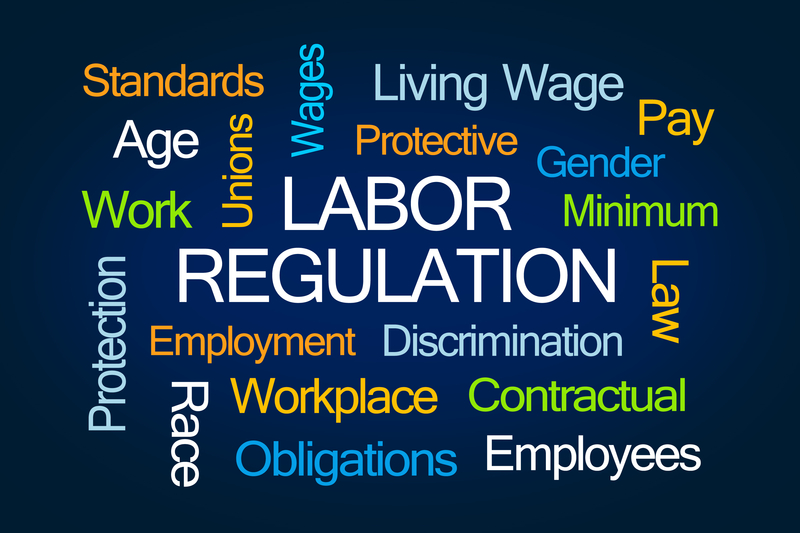
By Scott Lyon, Senior Vice President, SBAM
The U.S. Department of Labor issued its much-anticipated final rule changing the regulations for the so-called “white collar” exemptions under the FLSA, and doubled the minimum salary level necessary for employees to be properly classified as exempt executive, administrative, and professional employees.
It is important for our members to know that no exception is made for small businesses or non-profit employers. The final rule also allows for up to 10 percent of the minimum salary level for non-highly compensated employees to be met by non-discretionary bonuses, incentives, or commissions, if these payments are made on at least a quarterly basis.
As a practical matter, these changes to the “white collar” regulations can mean higher wages to employees, higher wage costs for employers, reduced extra hours for now non-exempt individuals, and likely increased exposure and risk to employers in wage and hour cases. Now what?
The Fair Labor Standards Act new “overtime rule,” does three things:
1. Increases the minimum salary threshold from $23,660 per year ($455 per week) to $47,476 ($913 per week).
2. Sets the total annual compensation requirement for highly compensated employees (HCE) subject to a minimal duties test at $134,004; and
3. Establishes a mechanism for automatically updating the salary and compensation levels every three years.
For employers, the change requires taking a hard look at the way in which employees are classified, the number of hours they are working, how their time is tracked and how they are paid (hourly vs. salary).
The updated rules go into effect December 1, 2016. After this date companies found not in compliance may be subject to fines and penalties.
So, what should you do next?
Track the Time – With an estimated 4 – 5 million workers impacted by this new rule, the first order of business is to establish a good way in which employee hours are tracked. To be able to comply with the new rule you are going to need good information. To get good, accurate information you are going to need a reliable tracking system. Does your company track employee hours manually or do you use a payroll system to track time and attendance? What makes sense for your business?
Under the New Rule – Which of your Employees are Exempt and which are Non-Exempt?
Obviously, this is a critical step. You will need to examine this based upon their current compensation, as well as the duties test (e.g., employees must be in administrative, professional or executive positions). You will need to pay close attention to employees who are currently exempt, but with the near doubling of the threshold may no longer meet that standard and move to a non-exempt status, and therefore eligible for overtime compensation.
You Have Less Than Six Months to Adjust – Get Started
Once you know, based upon current compensation, which of your employees is exempt and which are non-exempt, consider your options and evaluate the impact of the change on individual positions. For example, should you raise the compensation of a specific position to the threshold to keep it exempt, or will you reclassify the employee as non-exempt and begin paying overtime?
Don’t Forget to Communicate the New Rules to your Managers and Employees
This is especially true if your budget is tight and may need to manage employees’ time to keep them from exceeding 40 hours per week. Having a clear time and attendance policy is important. Once the policy is in place, communicate that to your employees – especially whomever in your business sets schedules. Your managers and employees need to understand the changes — and the potential implications for deviating from the plan.
Some Pitfalls to Consider
Do you track when your non-exempt employees come and go? Do some have a company issued laptop or cell phone? Here are a couple examples that may get your business in trouble with the Department of Labor if you don’t track time outside of work in which a non-exempt employee answers client or other employees’ e-mails or calls.
- Your non-exempt employee has a company issued mobile phone or laptop and is in the habit of responding to internal or customer emails after hours – this counts and must be either tracked or your time and attendance policy must address this. The time counts.
- Your normal hours of operation are 8:00 am – 5:00 pm with an hour for lunch. But, your employee is busy with a customer issue and works through lunch, or eats lunch at their desk in front of their computer. The time counts.
For the above two examples, you can avoid this issue by requiring employees to log out and in for each break and having their managers review time and attendance reporting on a weekly basis. Precision in time tracking will help keep your business in compliance and minimize risk for a DOL violation.
Last pitfall to consider – Some of your employees could lose the status as an exempt employee that they have worked hard for and they could also lose the flexibility in their work schedules that comes along with the exempt status. Be ready for the hard feelings that come along with this and be ready to explain why this is – it is not something that you dreamed up last night.